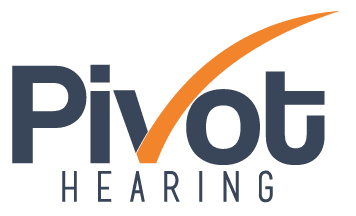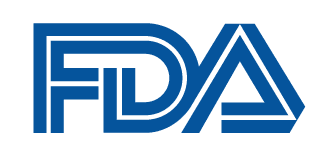Practice Management | February 2021 Hearing Review
Managed care is bureaucratic. It’s slow. Its reimbursement can be low. And it’s not going away.
Managed care is substantially growing in depth and breadth every year. Telehealth, OTC, the current pandemic, and other factors significantly impact the modern hearing care office in tandem with managed care. Therefore, as we evaluate, select and participate in managed care, we must seek and select the opportunities which best meet the goals and needs of the modern hearing care office. As such, we suggest an annual review of all managed care contracts to assure each contract is appropriate for your current practice requirements. Further, it is of significant importance to assure that each contract provides or allows acceptably reimbursed services and products, to facilitate a Best Practice-based professional experience to be realized by the patient.
By Douglas L. Beck, AuD, Edward Braun, and Debra Abel, AuD
Managed care is controversial. Understandably, some hearing care professionals (HCPs) believe they are not reimbursed well enough for their care, expertise, facilities, responsibilities, administrative costs, and more when dispensing hearing aids to patients with hearing aid benefits. Further, many patients believe they are paying too much for the limited service and product benefits received. That is, from the patient’s perspective, the co-pays, monthly fees and thousands of dollars in annual deductibles paid out-of-pocket are a significant burden, so they, too, feel disadvantaged. Arguably worse, is the fact that some 30 million people do not have health insurance at all.1
As licensed HCPs, we cherish the private-pay patient in their dual role as patient and decision maker. When working one-on-one with the private-pay patient, we test, diagnose, and treat with less bureaucracy and likely more in accordance with Best Practices. When the private-pay patient experiences an improvement in their quality of life (QOL) as a result of our consultation, they enthusiastically refer their private-pay friends and families. Unfortunately, the pool of private-pay patients is shrinking rapidly.
More than 10,000 Baby-Boomers (73 million Americans born from 1946 to 1964) “age into” Medicare, Medicare Advantage (MA), and other programs daily. As such, the decrease in private-pay patients is largely due to people opting into MA. Previously, first-time hearing aid users generally accessed hearing care via direct response marketing, or a direct to provider referral, or a convenient clinic location. Currently, first-time hearing aid users increasingly access hearing care through their MA membership plan, thus by-passing traditional routes for care, while taking advantage of their hearing care benefits.2
Historic Milestones
Prior to the mid-1960s, professionals were more-or-less paid via the “Fee for Service (FFS)” model. Providers could be paid in cash or barter (chicken, goats, eggs, cars, real estate, or whatever else had value) if the patient and the provider agreed to do so. In 1945, President Harry Truman called for a national health insurance fund and in July of 1965, Medicare and Medicaid were signed into law by President Lyndon Johnson and went into effect in 1966. (Fun fact: the first two recipients of Medicare were Harry and Bess Truman.)3
Early managed healthcare evolved in the mid-1900’s when groups of physicians banded together to provide pre-paid care for individuals. In the 1970s, the US federal government and large private companies encouraged workers to join healthcare groups. In 1973, the Health Maintenance Organization (HMO) Act was passed by Congress.4 The HMO Act promoted and facilitated the growth of HMOs in response to increasing medical costs. In the mid-1980s, employers more aggressively turned to managed care to contain healthcare costs while still providing quality care for their employees.
In the 1990’s managed care enrollment increased dramatically, engaging government-sponsored Medicare and Medicaid programs and their respective memberships. At this same time the emergence of Medicare Part C (Medicare Advantage) appeared.4 Medicare Part C often includes various levels of hearing care and hearing aid benefits as an option for enrolled members along with other auxiliary healthcare benefits like dental, vision, chiropractic, etc. Of note, these auxiliary benefits were not available in the original US government Medicare program. However, in 2011, the first members of the baby-boom generation turned 65 years of age, living longer, seeking more benefits in retirement, and facilitating changes in managed care.
In 2020, according to the Kaiser Family Foundation,5 there are 67.7 million Medicare beneficiaries, the fastest growing segment of whom include 24 million (36%) beneficiaries enrolled in Medicare Advantage programs. The Congressional Budget Office (CBO) projects Medicare Advantage will include more than 50% of all Medicare recipients by 2030. In 2019, Medicare spending was $799.4 billion, which was 21% of the USA National Health Expenditure (NHE). The NHE in 2019 was $3.8 trillion, or $11,582 per person. National health spending is projected to grow at an average annual rate of 5.4% for 2019-28 and to reach $6.2 trillion by 2028.6
The Tidal Wave: Medicare Advantage
There are now (December 2020) 24 million members enrolled in Medicare Advantage. The membership has grown about 5 times since 2004 (Figure 1).

Things are changing rapidly. Of note, 93% of MA programs offer some level of hearing care products and services through contracted Medicare Advantage plans (Table 1).2 Although exact numbers are unknown, based on large group data interpolation, we estimate that only 1-3% of MA members acquired hearing care benefits through their MA program in 2020. As such, approximately 350,000 to 400,000 hearing aid units were delivered through MA programs in 2020, representing approximately 10% of the total USA market. Clearly, as managed care (MC) grows, and as MA grows, the growth potential is staggering, as MA members become aware of and use their hearing care benefits.

In 2016, the National Academies of Sciences and Medicine (NASEM) released their report on the accessibility and affordability of hearing aids.7 The report included 12 goals and recommendations. Among them, Goal #3 called for the removal of the US Food and Drug Administration’s (FDA) regulation requiring adults to have a medical evaluation or sign an evaluation waiver to purchase hearing aids. In December 2016, the FDA issued a press release stating the use of the waiver would not be enforced for those aged 18 and older.8 Nonetheless, most states maintain their original rules, such that medical clearance or a waiver is still required (we recommend the reader check with their state boards).
Of note, NASEM Goal #7 called for the creation of a new category of hearing aids, over-the-counter (OTC) devices, for those with self-perceived mild to moderate hearing loss.7 At this writing, the FDA has not issued their guidance as stipulated by the FDA Reauthorization Act of 2017 by August 2020.
NASEM’s Goal #9, “hearing health care professionals should improve transparency in their fee structure by clearly itemizing the prices of technologies and related professional services to enable patients to make more informed decisions” underscores the Hearing Loss Association of America’s request in August 2012 to have itemized and transparent fees for services.9 While many practices find this daunting, the NASEM has endorsed this protocol and it may be the pragmatic route to optimizing fees and billing managed care and other third-party payers (TPPs) and third-party administrators (TPAs), as well as providing services to MC, TPP and TPA patients with OTC or other products, who need professional assistance.
Covered and Non-Covered Services
As recently pointed out by Nicholas Reed, PhD, in an October 2020 Hearing Review interview, “OTC products may unfold faster than the much-needed delivery care models and payers can adapt.” Some MC, TPP, and TPA contracts reimburse for additional covered services, beyond Current Procedural Terminology based diagnostic services (CPT codes describe treatment and diagnostic services). As such, under specific contracts, providers may be allowed to bill the patient for typically non-covered services, or perhaps (when appropriate) an upgrade in technology. Of course, each situation is unique and each needs to be verified through a verification of benefits process. Additionally, itemized/unbundled processes may pave the way for best practices (probe-mic real-ear measures, speech-in-noise, and other forms of hearing aid validation and verification) to be incorporated and reimbursed into the hearing aid delivery process, consistent with Best Practice statements by AAA,11 ASHA,12 IHS,13 and ADA.14
As the history of covered services has been traditionally bundled into the cost of hearing aid acquisition, new OTC and other non-traditional customers will likely be unpleasantly surprised if and when they have to pay professional fees for non-covered professional services to test, counsel, program, verify, and validate OTC (and other) products.
Related Article: Managed Care: Some Caveats and Common Sense for Hearing Care Professionals
These observations become even more important as we move towards a larger managed care world in which patients increasingly acquire hearing aids through non-traditional routes. Given new hearing aid acquisition models, it appears the HCP may be expected to adjust/modify/fine-tune/fix/repair the product appropriately for the needs of the patient, as those services were previously handled by the HCP in the bundled model. However, in the itemized/unbundled world, professional HCP services will need to be compensated from the patient or the managed-care entity, all of which is best addressed pre-emptively.
Best practices (BPs) lead to best outcomes. Importantly, BPs include appropriate billing for expertly dispensed products and provided services required to ensure patient success. As such, we recommend that, when possible, terminology such as a “hearing aid evaluation” (often used in code descriptions) should be replaced with modern and appropriate terms such as “listening, communication, and/or functional needs assessment,” as more global and inclusive services are provided and may benefit from clarification in contractually covered, versus non-covered, reimbursement options.
Notably, in 2020, Patient Centered Care (PCC) is among the six Institute of Medicine’s (IOMs) key elements15 in which patients are listened to, informed, and respected. Using PCC, patients are involved in their own decision-making. Many HCPs spend an hour or more with each patient to comprehensively test, diagnose, and determine the best path to achieve the patient’s goals for success, based on the patient’s specific and unique hearing, listening, and communication needs. The patients’ goal is most often to be able to clearly understand speech sounds perceived in noise and other difficult listening situations.16
Further, there are 38 million people with hearing loss as measured on an audiogram in the USA. However, there are another 26 million people in the USA who have hearing difficulty and/or listening disorders and present with normal thresholds.17 Although exact numbers are not known, many of these 26 million people may be professionally and successfully managed with an improved signal-to-noise ratio (SNR) availed through assistive listening devices, hearing loops, telecoils, hearing aids, digital remote microphones, FM systems and more.18,19
Certainly not every patient with hearing loss, hearing difficulty, and/or listening disorders needs, requires, or desires hearing aids.17,19 However, many people with supra-threshold auditory disorders, hearing difficulty, and/or listening disorders will benefit from comprehensive testing, a differential diagnosis, professional counseling, aural rehabilitation, and/or appropriate listening and communication strategies and professional services and products—all of which should be addressed in an itemized/unbundled contract, pre-emptively. Of note, we should be careful not to allow audiograms to be the “exclusive pivot point” upon which hearing healthcare is delivered, as that would exclude 26 million Americans from diagnosis, management, and treatment of their suprathreshold auditory problem.17
Third Party Payers and Managed Care
As with working with Medicare and Medicaid patients, contracting with MC, TPPs, and TPAs is a business decision each practice must make. Unfortunately, many plans are focused solely on hearing aid delivery and acquisition. As such, consideration of other recognized Best Practice professional services and diagnostic procedures—comprehensive audiologic evaluations, listening and communication assessment and evaluation, and verification and validation procedures—may not be considered, covered, or addressed.
Many plans require specific services to be bundled into the hearing aid delivery, purporting that these are “hearing aid related services” and are part of hearing aid delivery. You may agree and accept those terms, or you may choose not to. The key issue is often whether or not you consider professional services such as verification, validation, and other HCP Best Practice protocols to be adequately and appropriately covered by the proposed reimbursement schedule. These are extremely important business, legal, ethical, and professional decisions, which mandate careful analysis prior to acceptance.
Know Your Cost of Doing Business
An important initiative for each practice is to ascertain their break-even point. That is, to determine exactly how much it costs per hour to keep your office open. The American Academy of Audiology’s Guide to Itemizing Professional Services20 can be used to help determine your hourly costs and rates. After the cost of doing business has been quantified, one can apply proposed contract parameters and confines to determine if the particular contract meets the needs of the professional office. Further, itemizing individual services should help optimize billing and reimbursement, in accordance with the proposed contract.
Choosing to “just say no” to MC, TPP, and TPA is an option. However, be aware of the downside of saying no. Specifically, the popularity of these plans will surely increase, and exclusion may not be the best possible forward-looking solution. Of course, if the MC, TPP, and TPA does not provide sufficient funding to create appropriate revenue, it may be best to walk away. However, once you have determined and are aware of your cost of doing business, and, if the MC, TPP and/or TPA allows you to reduce or eliminate your marketing and patient acquisition costs, your break-even point may be lower than anticipated and your MC, TPP, and TPA-based profit margins may be higher than anticipated.
Advantages of Managed Care
The above points to some clear advantages associated with specific managed care contracts. For example, there is a potential for substantial cost savings regarding fewer marketing dollars spent. Additionally, managed care may present a welcomed and constant referral source and flow of new patients into the office. When appropriate and permitted, some hearing devices may need to be upgraded, which can clearly be beneficial to the patient and the professional office.
Managed Care Practice Model
One practice model which seems to be gaining traction is that in which an office might offer different service plan levels with commensurate variable services and price points.21-24 For example, a basic plan might include one or two clean and check appointments, a re-programming visit and a basic manufacturer one-year warranty period. A higher-level plan could include additional clean and check appointments, additional re-programming visits, and/or extra manufacturer parts and labor warranty. Multi-tiered service plans may be an enticement as they often address the concerns and immediate needs of the patient, and often represent an excellent value for the patient, as they only pay for services within the service tier they select.
Telehealth Considerations
Service delivery via telehealth has vastly increased in 2020 due to the pandemic. If you are considering (or are offering) telehealth services, ensure that your state licensure laws support and permit these activities when performed by an HCP with your particular license. Further, one must verify pre-emptively that any managed care contract you participate in allows telehealth visits, programming, consultations, etc, and of course, you’ll need the permissible billing and coding protocols.
Further, if you are providing diagnostic services and billing via CPT codes and similar, you must have a physician’s order with a medically necessary reason for Medicare Part B beneficiaries. Of note, other MC, TPPs, and TPAs may require the same. If you provided bundled hearing aids in the pre-pandemic world, you cannot charge for those ongoing/follow-up services via telehealth, as they were already paid for up-front. If you typically provide(d) a service at no charge in a face-to-face visit, you cannot charge for that service when provided via telehealth.
The Centers for Medicare and Medicaid Services (CMS) has currently (December 2020) not made any telehealth changes for audiologists since the time of the pandemic emergency declaration when waivers were created. Only the four recent cochlear implant codes (92601, 92602, 92603, and 92604) are permitted to be provided via telehealth to Medicare Part B beneficiaries, which occurred due to the waivers that CMS instituted during the pandemic. The latter of the two codes are the only applicable codes for the Medicare population as they are for those aged 7 years or older, for the initial stimulation of an implant and for the subsequent mapping.
Nonetheless, we strongly recommend that you monitor your state licensure laws, because some—especially those regarding the provision of telehealth services—may change as state and federal requirements change during and after the pandemic.
Conclusion/Discussion
A year ago, few people could have predicted our current status quo. The vast changes thrust upon HCPs and the hearing healthcare industry via Medicare Advantage, managed care, Third Party Payers, third-party administrators, the COVID-19 pandemic, and telehealth have been substantial—and they’re not over! This is a dynamic, fluid situation.
Managed care is substantially growing in depth and breadth every year. Telehealth, OTC, and other factors significantly impact the modern hearing care office in tandem with managed care. Therefore, as we evaluate, select, and participate in managed care, we must seek and select the opportunities which best meet the goals and needs of the modern hearing care office and their patients.
As such, we suggest an annual review of all managed care contracts to assure each contract is appropriate for your current practice requirements. Further, it is of significant importance to assure that each contract provides or allows acceptably reimbursed services and products to facilitate a Best Practice-based professional experience to be realized by the patient. w
References
- Keisler-Starkey K, Bunch LN. Health insurance coverage in the United States: 2019. September 2020. Washington, DC. US Census Bureau;2020:60-271. Available at: https://www.census.gov/content/dam/Census/library/publications/2020/demo/p60-271.pdf
- Young J, Creighton S, Kornfield T, Donthi S. Medicare advantage beneficiaries will again see a jump in supplemental benefit offerings in 2020. November 19, 2019. Available at: https://avalere.com/insights/medicare-advantage-beneficiaries-will-again-see-a-jump-in-supplemental-benefit-offerings-in-2020
- Social Security Administration. Medicare is signed Into law [Social Security History, July 30, 1965). Available at: https://www.ssa.gov/history/lbjsm.html
- Uyehara E, Thomas M. Health Maintenance Organization and the HMO Act of 1973. December 1975. Rand Paper Series. Available at: https://www.rand.org/content/dam/rand/pubs/papers/2009/P5554.pdf
- Freed M, Damico A, Neuman T. A dozen facts about Medicare Advantage in 2020. January 13, 2021. Available at: https://www.kff.org/medicare/issue-brief/a-dozen-facts-about-medicare-advantage-in-2020/
- Centers for Medicare and Medicaid Services (CMS). NHE Fact Sheet. December 16, 2020. Available at: https://www.cms.gov/Research-Statistics-Data-and-Systems/Statistics-Trends-and-Reports/NationalHealthExpendData/NHE-Fact-Sheet#:~:text=Medicare%20spending%20grew%206.7%25%20to,16%20percent%20of%20total%20NHE
- National Academies of Sciences, Engineering, and Medicine (NASEM). Hearing Health Care for Adults: Priorities for Improving Access and Affordability. Washington, DC: The National Academies Press; 2016. https://doi.org/10.17226/23446.
- FDA Eliminates ‘Physician Waiver’ System in Hearing Aid Dispensing. December 7, 2016. Available at: https://hearingreview.com/inside-hearing/regulation/fda-eliminates-waiver-system-patients-obtain-hearing-aids
- Hearing Loss Association of America. Hearing Loss Association of America (HLAA) applauds support of consumer-driven hearing health care. August 20, 2012. Available at: https://www.prnewswire.com/news-releases/hearing-loss-association-of-america-hlaa-applauds-support-of-consumer-driven-hearing-health-care-166802956.html
- Beck DL. PSAPs, OTC and self-fitting hearing aids, ACHIEVE, and more: An interview with Nicholas Reed, PhD. Hearing Review. 2020[Nov];27(11):26-28. Available at: https://hearingreview.com/inside-hearing/research/psaps-otc-and-self-fitting-hearing-aids-achieve-and-more-an-interview-with-nicholas-reed-phd
- Valente M, Abrams H, Benson D, et al. Guidelines for the Audiologic Management of Adult Hearing Impairment. 2006. Available at: https://audiology-web.s3.amazonaws.com/migrated/haguidelines.pdf_53994876e92e42.70908344.pdf
- Valente M, Barninger KH, Oeding K, et al. American Academy of Audiology Clinical Practice Guidelines: Adult Patients with Severe-to-Profound Unilateral Sensorineural Hearing Loss. June 2015. Available at: https://www.audiology.org/sites/default/files/PractGuidelineAdultsPatientsWithSNHL.pdf
- International Hearing Society. Best Practices Recommendations for Fitting and Dispensing Hearing Aids. March 3, 2020. Available at: https://www.ihsinfo.org/IhsV2/professional-development/pdf/2020/IHS%20Best%20Practices%20Recommendation%20for%20Fittting%20and%20Dispensing%20Hearing%20Aids_02052020_FINAL%20updated%202020.pdf
- Academy of Doctors of Audiology. Scope of Practice. 2020. Available at: https://www.audiologist.org/prospective-students/scope-of-practice
- Epstein RM, Street RL, Jr. The values and value of patient-centered care. Ann Fam Med. 2011 [Mar]; 9(2):100-103. doi: 10.1370/afm.1239
- Beck DL, Benitez L. A two-minute speech-in-noise test: Protocol and pilot data. Audiology Today. 2019. May/June. Available at: https://www.audiology.org/audiology-today-mayjune-2019/two-minute-speech-noise-test-protocol-and-pilot-data
- Beck DL, Danhauer JL. Amplification for adults with hearing difficulty, speech in noise problems–and normal thresholds. J Otolaryngol ENT Res. 2019;11(1):84‒88. DOI: 10.15406/joentr.2019.11.00414
- Beck DL. Managing patients with normal thresholds. Presented at: International Hearing Society 2019 Annual Convention. Nashville, Tenn. Available at: http://www.ihsinfo.org/IhsV2/Education/pdf/Webinar_Managing_Patients_with_Normal_Thresholds_10302019_final.pdf
- Beck DL, Danhauer JL, Abrams HB, Atcherson SR, Brown DK, Chasin M, Clark JG, De Placido C, Edwards B, Fabry DA, Flexer C, Fligor B, Frazer G, Galster JA, Gifford L, Johnson CE, Madell J, Moore DR, Roeser RJ, Saunders GH, Searchfield GD, Spankovich C, Valente M, Wolfe J. Audiologic considerations for people with normal hearing sensitivity yet hearing difficulty and/or speech-in-noise problems. Hearing Review. 2018;25(10)[Oct]:28-38. Available at: https://hearingreview.com/hearing-loss/patient-care/evaluation/audiologic-considerations-people-normal-hearing-sensitivity-yet-hearing-difficulty-andor-speech-noise-problems
- American Academy of Audiology. A Guide to Itemizing Your Professional Services. January 2012. Available at: https://www.audiology.org/sites/default/files/PracticeManagement/20120110_AAA_Guide_Itemizing_Prof_Serv.pdf
- Mueller G, Coverstone JA. 20Q: Fee-for-service in an audiology practice. March 5, 2012. Available at: https://www.audiologyonline.com/articles/20q-fee-for-service-in-776
- Taylor B. Getting ahead of the curve, Part 1: Four cornerstones of a fee-for-service clinic. Hearing Review. 2018;25(3):16-20. Available at: https://hearingreview.com/practice-building/getting-ahead-curve-part-1-four-cornerstones-fee-service-clinic
- Quall D, Taylor B. Patient complexity and professional time: Improving efficiencies in the service model. Hearing Review. 2016;23(10):42-44. Available at: https://hearingreview.com/hearing-loss/patient-care/patient-complexity-professional-time-improving-efficiencies-service-model
- Quall D. How low can you go? Practical considerations when offering a low-priced hearing aid [webinar]. March 23, 2016. Available at: https://hearingreview.com/2016/03/webinar-low-can-go-practical-considerations-offering-low-priced-hearing-aid

About the authors: Douglas L. Beck, AuD, is Vice President of Academic Sciences at Oticon Inc, Somerset, NJ; Edward Braun is Senior Vice President of Managed Care and Corporate Partnerships at Demant Group Services, Somerset, NJ, and Debra Abel, AuD, is Manager of Coding and Contracting at Audigy Inc, Vancouver, Wash.
CORRESPONDENCE to: Dr Beck at: [email protected]
Citation for this article: Beck DL, Braun E, Abel D. Managing managed care. Hearing Review. 2021;28(2):10-14.

Interested in Managed Care?
Like it or not, managed care is here and is substantially growing in depth and breadth every year. Telehealth, OTC, the current pandemic, and other factors significantly impact the modern hearing care office in tandem with managed care and TPAs. Therefore, as we evaluate, select, and participate in managed care, we need to seek and select the opportunities which best meet the goals and needs of the modern hearing care office.
To read the full article, please fill out our short form.
You have Successfully Subscribed!
Sponsored by







What exactly is the aim of this article? Please clarify this.
Are hearing aids needed for supplying aided speech inputs, or required for amplifying sounds for better awareness?
We have now created technology hereby the hearing aids can actually reduce nerve damage in the 8th nerve array, and improve cognition. In most cases cognitive improvement is the single most target plan and hearing aids do help in its accomplishment. We need to drop “old hat” audiology and focus i educating hearing impaired patients on the need to preserve residual hearing and nerve performance. it may be emphasized at the average hearing aids are most like to damage 8th nerve connections even more leading to progressive hearing losses, that are passed off as due to aging!!!!
The biggest requirement is education to prevent progressive hearing losses.